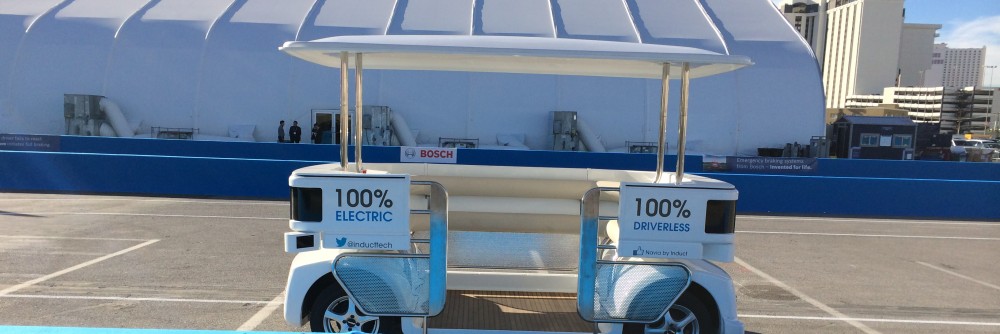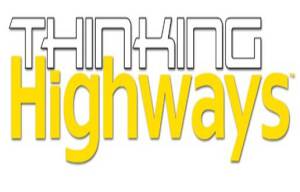The 2014 Automated Vehicles Symposium is coming to San Francisco next month (July 15-17, July 14-18 with ancillary meetings). The meeting is being designed and organized by AUVSI and TRB. This looks to be one of the, if not the, premier event on Automated Vehicles in 2014.
This is the third year for this type of meeting for both AUVSI and TRB; however, in previous years each organization has had its own meeting. This is the first year that the two groups are working together. Since the two will not be competing, an even stronger program should be provided this year.
The original TRB automated vehicle workshop in 2012, was very education focused. That meeting focused on providing information to the community about the state of the industry and in particular what was happening outside of the U.S. Last year’s TRB workshop focused on developing research needs statements. Some of the research topics identified there have since been used by research groups, commercial entities and government agencies to focus their research in this space, and many are being posted to TRB’s Research Needs website.
The goal for this year’s program is even broader. Although some additional research needs will be defined, many of the breakout sessions will focus on broader goals. These will include synthesizing the existing research, identifying barriers to deployment and incentives to encourage further development in the industry.
One of the goals of this year’s meeting is to make it highly interactive and encourage questions and participation from the audience. Consequently, the plenary program is centered around presenters giving short “TED” like talks followed by interactive panel sessions. The organizing committee is working very hard to avoid “death by PowerPoint”.
Jane Lappin of the Volpe National Transportation Systems Center and Chair, TRB Intelligent Transportation Systems Committee and one of the key planners of this symposium as well as the two previous TRB workshop stated: “We are very excited about this year’s meeting. We’ve lined up a tremendous set of speakers and breakout sessions. I really think this will be out best meeting ever”.
The meeting will open on Tuesday morning with speakers who are leaders from the automotive industry. Tuesday’s keynote speaker is Dr. Ralf Herrtwich, Director Driver Assistance and Chassis Systems, Group Research and Advanced Engineering, Daimler AG. Dr Herrtwich will be followed by Dr. Jan Becker, Senior Manager, Autonomous Technologies Group, Robert Bosch, LLC., Cris Pavloff, Advanced Technology Engineer, BMW Group Technology Office and Dr. Maarten Sierhuis, Director, Nissan Research Center Silicon Valley. After the presentations, there will be a panel where the audience can ask questions of the group.
Following this is a panel on Digital Infrastructure with Ogi Redzic from Nokia HERE and Andrew Chatham, Principal Engineer, Self-Driving Cars, with Google, moderated by Bob Denaro.
Following Digital Infrastructure is a panel discussing Technology Challenges. Many people feel that the technology challenges have been met and the big hurdles are legal and consumer acceptance. However, Dr. Steven Shladover, Program Manager, Mobility at PATH at the University of California at Berkeley feels that this is far from true and thus this is a very important panel. Joining Dr. Shladover is Dr. Alberto Broggi, VisLab; Dr. Markos Papageorgiou, Director, Dynamic Systems & Simulation Laboratory, Technical University of Crete; Dr. John Leonard, Professor of Mechanical and Ocean Engineering Associate Department, MIT; and Michael Wagner, Carnegie Mellon University.
Following this panel, Steve Underwood will present the results of an online survey of the AVS2014 registrants in which they have expressed their opinions about the importance of the various challenges to deployment of automated systems and their predictions about when various levels of road vehicle automation will become commercially available. This will help set the stage for the afternoon breakout discussions by giving the participants an indication of what their peers think about the future of automated driving systems.
After lunch, the symposium will split into 10 breakout sessions. Each of these is a virtual symposium in and of itself. These sessions include:
- Evolutionary and Revolutionary Pathways to Automated Transit and Shared Mobility
- Regional Planning and Modeling Implications of Driverless Cars
- Roadway Management and Operations with Automated Vehicles
- Truck Automation Opportunities
- Legal Accelerators and Brakes
- The State and Future Direction of Automated-Vehicle Human Factors
- Near-Term Connected/Automated Technology Deployment Opportunities
- Personal Vehicle Automation Commercialization
- Technology Roadmap, Maturity and Performance: Operational Requirements for Vehicle-Road Automation Systems and Components
- Road Infrastructure Needs of Connected-Automated Vehicles
The second day will begin with the Clifford Nass Memorial Lecture, given in memory of Prof. Clifford Nass of Stanford University, one of the leaders in the industry until he passed away last fall. Don Norman, Director, Design Lab, University of California, San Diego and Author of “The Design of Future Things” will be giving the lecture, titled The Human Side of Automation. Don is one of the pioneers in human-computer interaction and worked with Prof. Nass, so this should be a fitting tribute.
Following the pattern of the first day, there will next be a series of speakers and panels from OEMs and Tier 1 suppliers in the automotive industry. These include:
- John Capp, Director, Electrical & Controls Systems Research & Active Safety Technology Strategy, General Motors Research & Development
- Steffen Linkenbach, Director Systems & Technology, NAFTA, Continental
- Patrice Reilhac, Innovation & Collaborative Research Director, Comfort & Driving Assistance Business Group, Valeo
- Dr. Chris Urmson, Director, Self-Driving Cars, Google
Next will be a series of presentations on some of the largest and most important automation projects in Europe. Dr. Adriano Alessandrini, Università degli Studi di Roma will discuss CityMobil2: Automated Road Transport Systems in Urban Environments (including a live video feed from a current demonstration in Sardinia); Dr. Angelos Amditis, Research Director, I-Sense Group, Institute of Communication and Computer Systems (ICCS) will discuss The AdaptIVe Project: Working on Research, Legal and Deployment Issues in Europe for Automated Vehicles and Anders Tylman-Mikiewicz, General Manager, Volvo Monitoring & Concept Center, Volvo Car Corporation will present The Drive Me Project: Autonomous Driving by Volvo (the major field test planned for 2017 in Gothenburg, Sweden).
Following the reports from Europe, the symposium will then look at Societal Issues and Non-technical Challenges, with a panel moderated by Jane Lappin, Volpe National Transportation Systems Center and Chair, TRB Intelligent Transportation Systems Committee; and including presentations by Ginger Goodin, Texas Transportation Institute, Texas A&M University System; Michael Gucwa, Management Science and Engineering department, Stanford University; and Dr. Ken Laberteaux, Toyota Research Institute-North America.
The final morning will begin with reports on current activities by national and state governments. Speakers will include:
- Kevin Dopart, Program Manager for Connected Vehicle Safety and Automation, Intelligent Transportation Systems Joint Program Office, U.S. Department of Transportation
- Nat Beuse, Associate Administrator, Vehicle Safety Research, National Highway Traffic Safety Administration
- A representative of the European Commission
- Takumi Yamamoto, Director, ITS Policy & Program Office, Road Bureau, Ministry of Land, Infrastructure and Transport
- Dr. Bernard C. Soriano, Deputy Director, Risk Management, California Department of Motor Vehicles
These presentations will be followed by brief summary presentations from the ten breakout discussion groups that spent the previous two afternoons in in-depth consideration of important topics associated with automation. This will be the opportunity for all of the meeting participants to learn about the key outcomes from the discussions in the breakout sessions they were not able to attend.
All in all, it looks to be an enlightening three days of presentations and panels, with the real leaders in the industry. When asked about the attendees, Dr. Shladover indicated that this was one of the really great aspects of AVS2014, because the people who have attended the previous meetings and who are expected to be coming again this year are people with a wide range of backgrounds from technology to government and research to manufacturing and everything in between. Furthermore, these were not just any people from these backgrounds but the thought leaders and decision makers.
In the coming days, we’ll provide insights into some of the breakout sessions that are part of this symposium. If you are interested in attending, space is limited, click here.


